Compared by some to a “Floor plan of the universe”, Mandala Art’s symbolic power can be attributed to the roots of classical Indian architecture, specifically in temples. Here are some special facts about Mandala Art.
It features repetitive designs in rhythmic patterns.
A Mandala is an ancient graphic symbol commonly found in many cultures serving as an influential aid to meditation and concentration.
Mandala Art has also made an appearance in Vastu Shastra, a traditional architectural system based on ancient texts that encompass principles of design, measurements, spatial geometry, and various other aspects.
In popular culture, the Asia Society presented the first exhibition meant to showcase multiple manifestations of the Mandala throughout Asia, called “Mandala: The Architecture of Enlightenment” in the year 1997. It featured many mandalas and associated objects like sculptures and models of sacred spaces from countries across the continent.
Co-organised by the Asia Society and Tibet House, the exhibition shone a light on the art form’s stunning artistry and diversity. Furthermore, it explored the artistic genesis and religious role of the Mandala in Buddhism.
At Aluminr, we often seek inspiration from classical design elements and movements. Our artisans harness visionary aesthetics, endorsed by regal materials and an understanding of India’s majestic culture. Mandala Art is one such style that has helped us forge exemplars of exceptional craftsmanship and refined taste, in the form of our Clone Door, Brass Shell Serenity Door, and Contemporary Dine Copper Double Door.
Understanding doors inspired by Mandala Art
The Clone Door
The Clone Door is crafted with copper to locate intriguing patterns amidst the repetitive nature of the symmetric art style. It is finished with stunning antique copper, allowing the oxidised blacks, browns, and red hues to breathe sophistication and consistency into the space.
Handcrafted in Copper
The Brass Shell Serenity Door
Evocative of the tranquillity of the ocean, it reflects a sense of refined coastal living. Embossed with patterns that resemble a seashell, the door features finishes that further accentuate its marine feel. When oxidised, the sea shell motif exhibits hues of gold, brown, and red.
Handcrafted in Brass with malachite semi-precious stone and mahogany wood
The Contemporary Dine Copper Double Door
The door’s design is inspired by the mesmerising starburst pattern, that bequeaths the mysteries of the universe within. Vivid hues, substantiated by the antique copper finish, unveil this masterpiece at its zenith. The Contemporary Dine Copper Double Door elevates and transports you to an earthy yet celestial space.
Handcrafted in Copper
Endorsed by a coherent design, these exquisite front doors spark a sense of panache in architectural spaces.
They are also exquisite examples of what we can achieve with textured brass front doors. Taking their inspiration from the beautiful Mandala art form, the design patterns of these metal doors create auras of depth and intricacy.
Their textures have been achieved through metal repoussage; a technique that focuses on creating low-relief panels by hammering thin sheets of brass and copper onto pre-designed forms. Their finishes are a result of manual oxidation, which is a process that helps in developing natural patina finishes.
For more insights like these, follow us on Pinterest and Instagram.
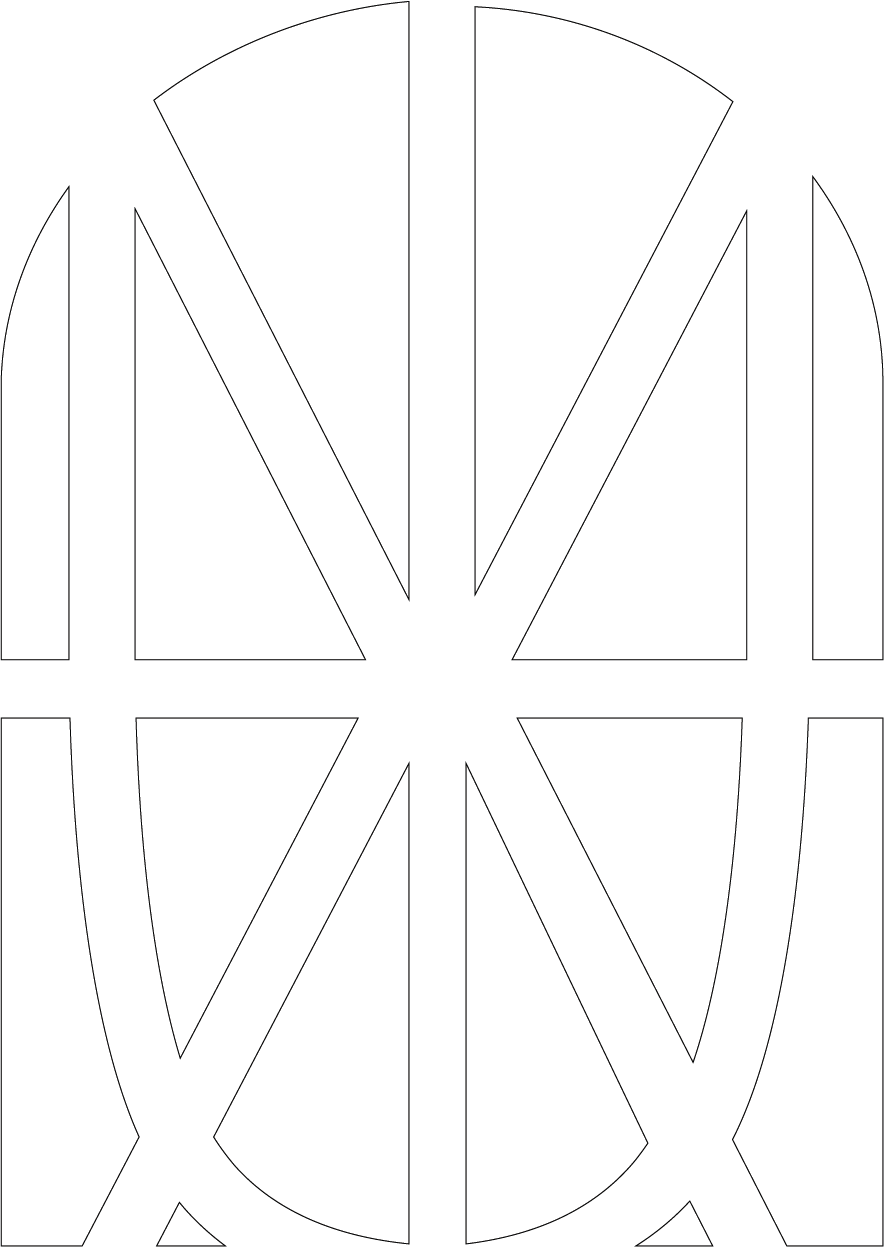





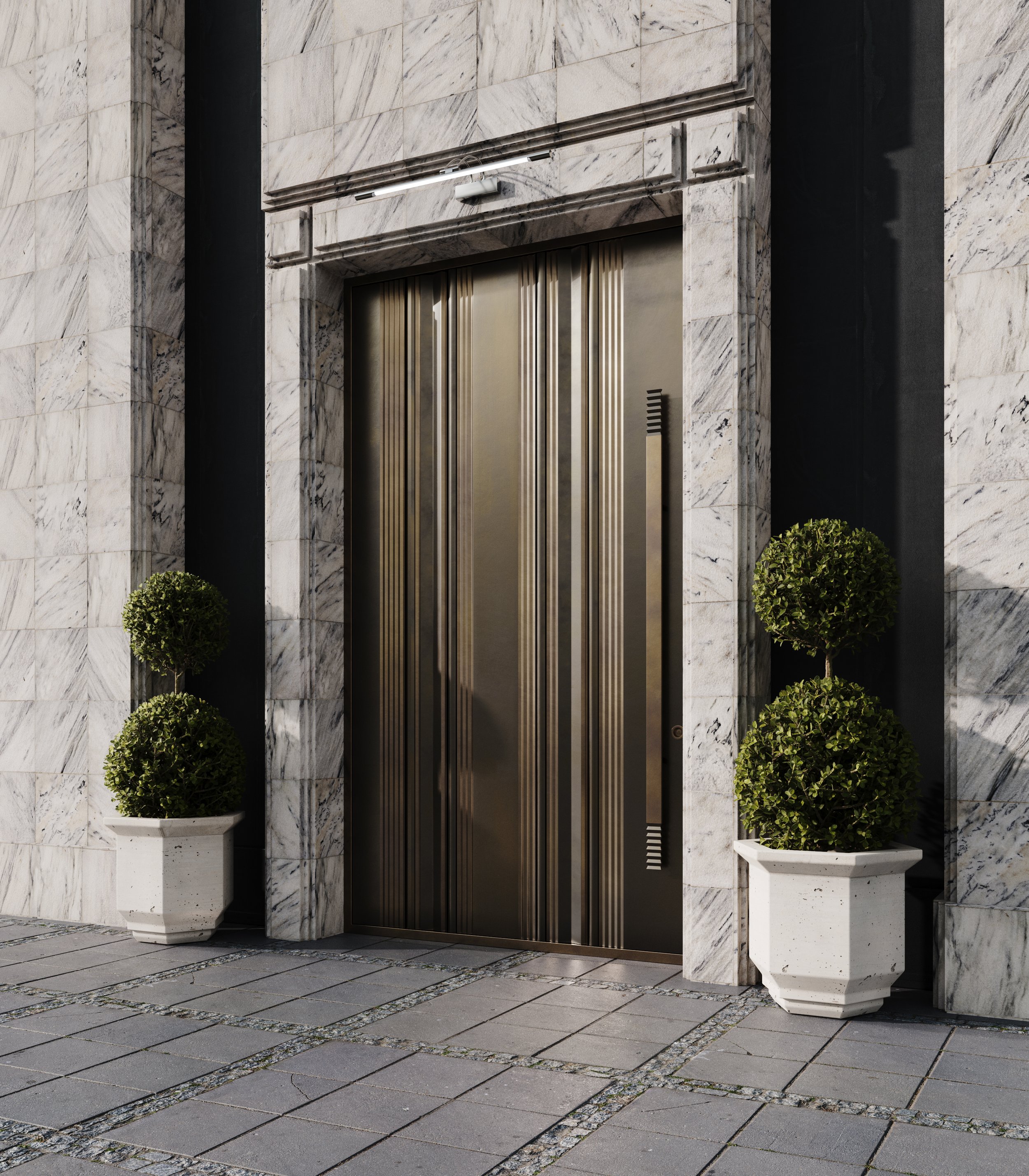
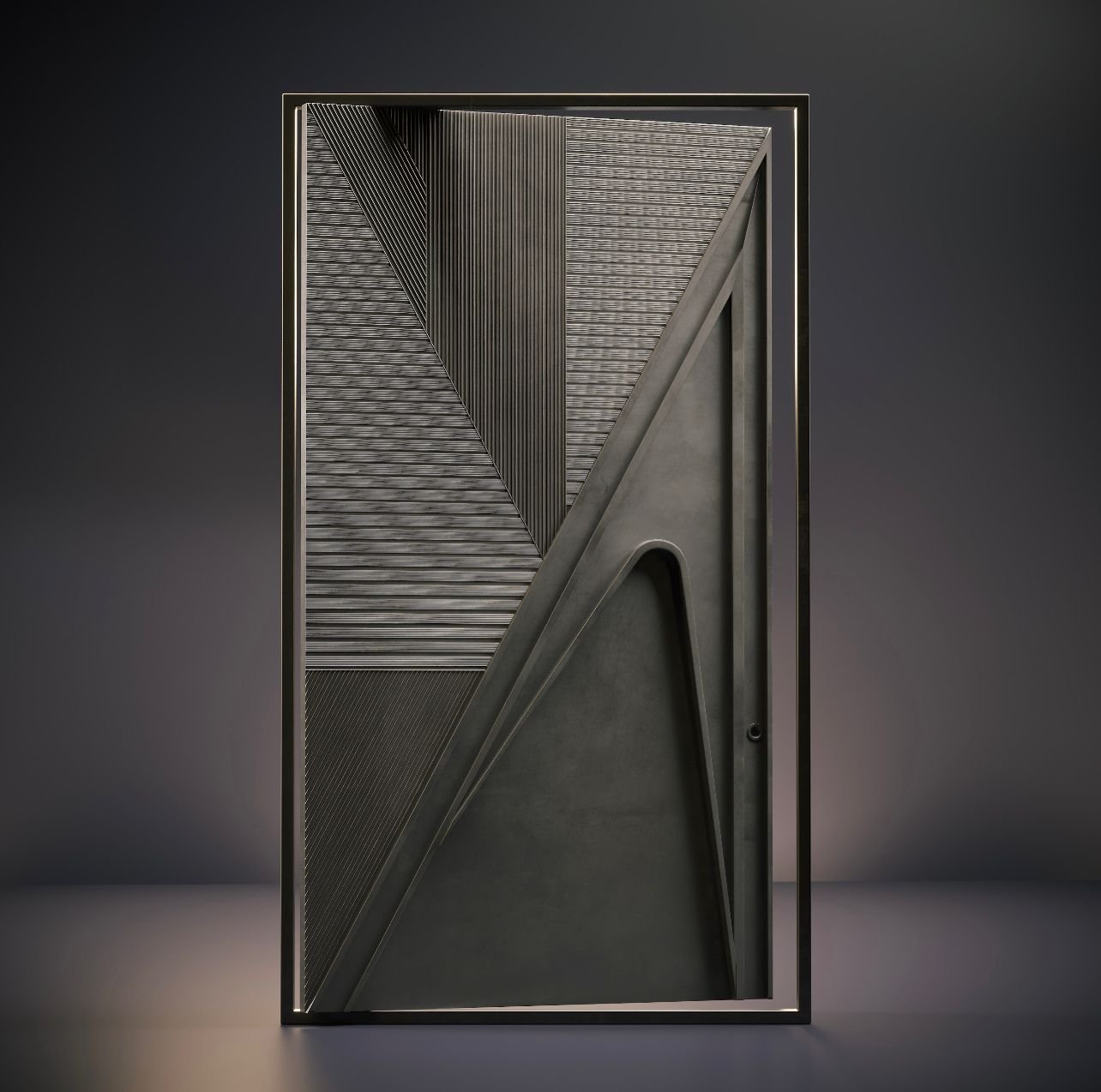
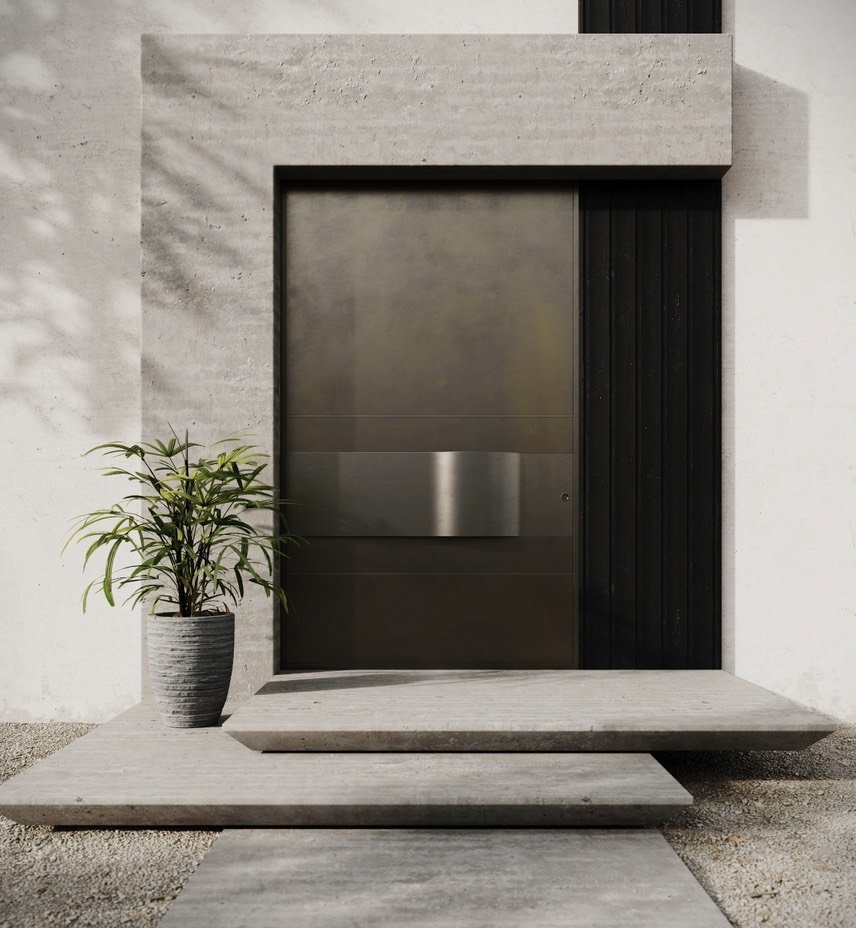
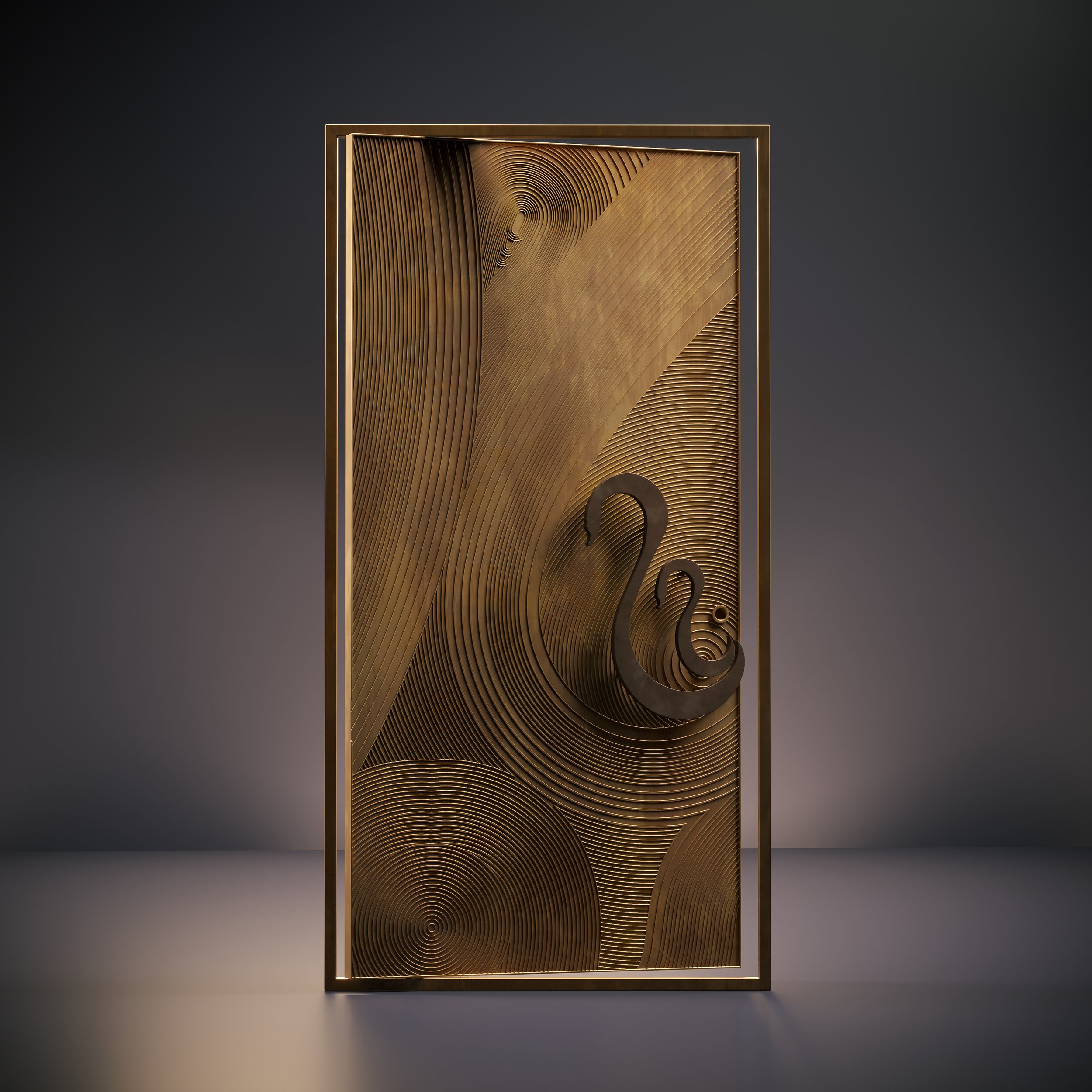
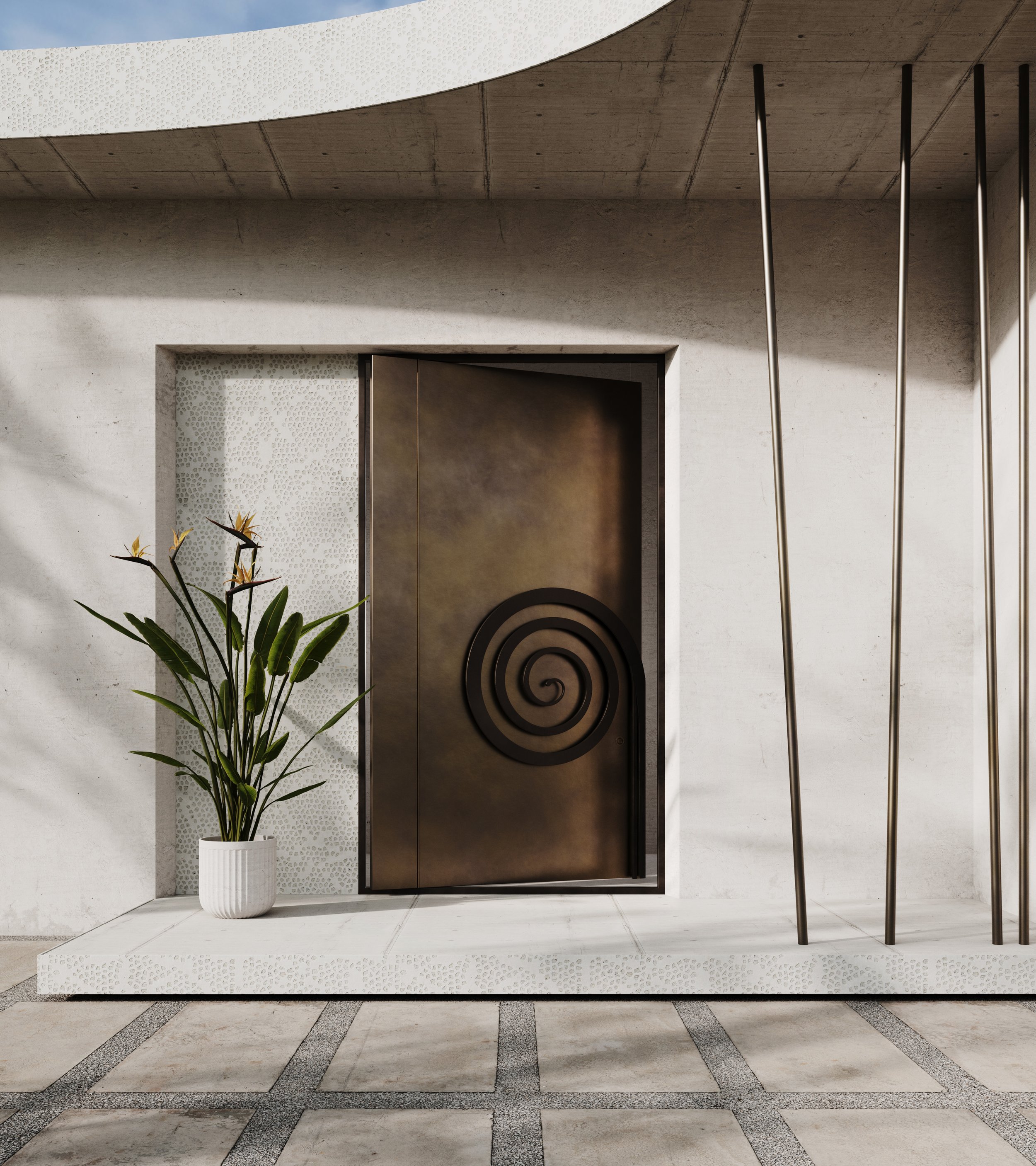
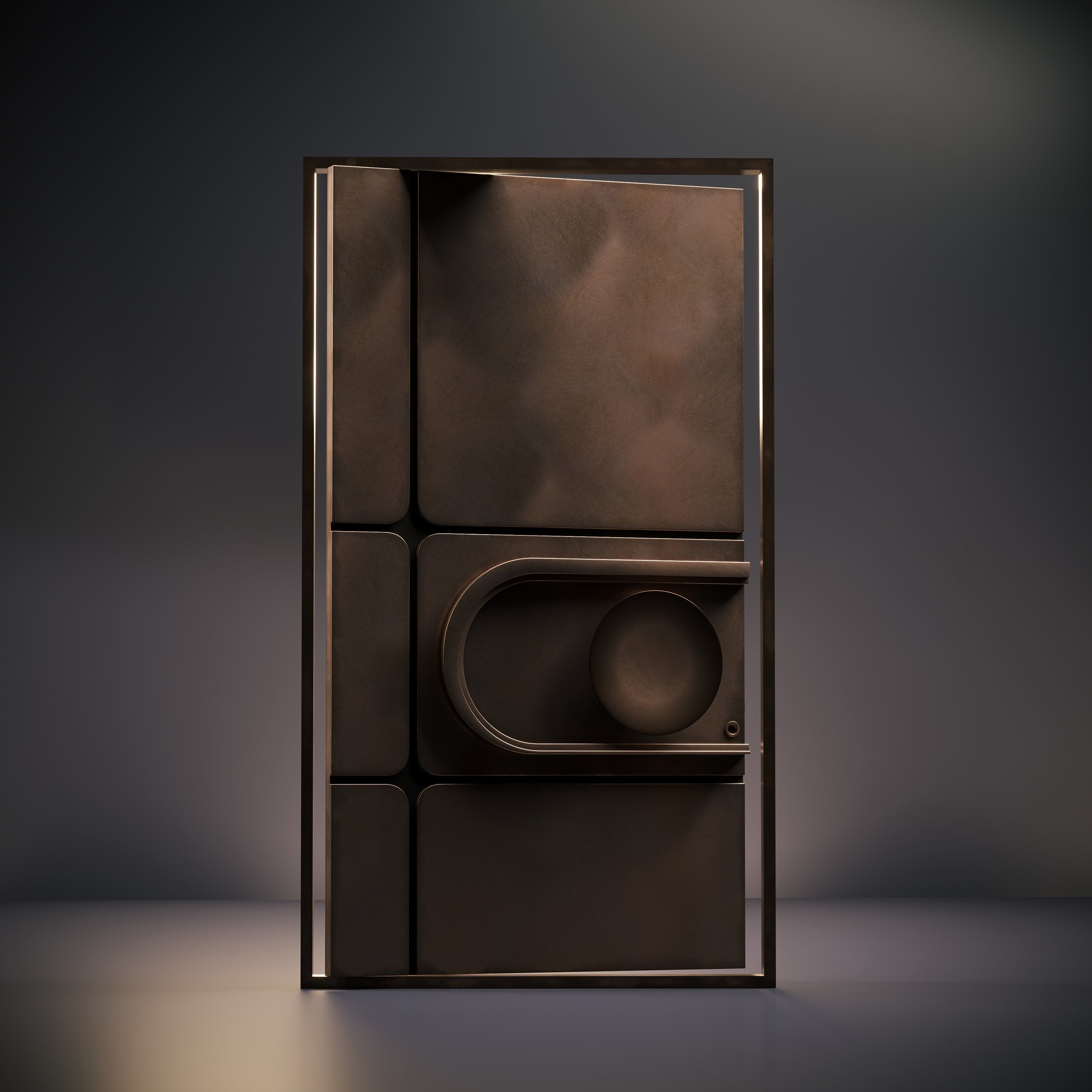


Detail in design opens a world that unfolds spectacular stories and splendid experiences. At Aluminr, we have had the fortune of crafting door designs with immense levels of detail, narrating aesthetic tales of luxury with every stroke of a chisel. Here’s what it means to have lush details in design.